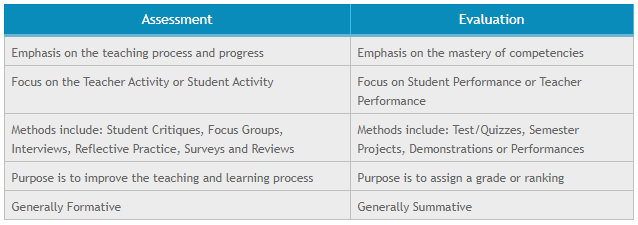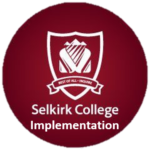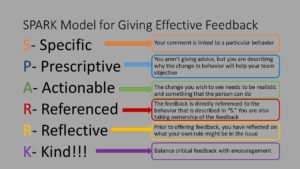7 Feedback
Feedback for learning can be viewed in two broad categories: formative assessment and summative evaluation. While most post-secondary courses are structured to generate a ranking final grade of students, there has been considerable research into the importance and pedagogical value of emphasizing early and frequent formative feedback (Blum & Kohn, 2020; MODULE III – Assessment and Evaluation, 2011).

Instructor Assessment and Evaluation
Recent research in the field of educational psychology is compelling that rich, supported learning comes when students receive frequent and early, formative feedback. TBL integrates this into its integral structure as an essential element. Students receive regular assessments to support learning, both in terms of the course content and their part in the team dynamics and functioning .
A TBL course facilitates this in several ways. The first is during the RAP phase of a TBL module. These low stakes quizzes not only expose students to knowledge gaps, but also give them the opportunity to improve those gaps in real time during the team portion of the quiz.
A second opportunity for instructor assessment occurs during the group application activities. Whether facilitated in-person or remotely with video conferencing break out rooms, the instructor can “circulate” through the various teams to observe the discussion around the presented problems. This appraisal is further rounded out during the discussion phase of the group application activities, when the instructor solicits and facilitates rich, critical discussion around the problem presented. It is at the discretion of the instructor to evaluate the group application activities with a mark or not, but typically this activity is purely formative (Michaelsen & Sweet, 2008; Sibley & Ostafichuk, 2015).
Peer Feedback

Peer assessment has been demonstrated to have great value in learning, particularly as a formative tool. The process of peer feedback can foster cognitive gains for both the giver and receiver, motivate students to be accountable and participate, improve quality of work and increase function as a team member (Cestone et al., 2008; Topping, 2009, 2018).
TBL is structured on the development of functional teams and team dynamics and as such, requires team member input into that process. In addition to being formative in nature, TBL integrates a low-stakes grade into the peer evaluation process to foster accountability within the team. This grade should be small enough that it doesn’t dramatically impact final grades, but significant enough (5-10%) that students will make efforts to participate and engage (Cestone et al., 2008; Sibley & Ostafichuk, 2015).
What is clear, is that peer evaluation must be facilitated carefully and with guidance or the outcomes can be catastrophic. Students must buy in to the importance of conducting peer evaluation, they must have clear criteria against which they are measuring their peers (and potentially be involved in developing the criteria), and they must be given instruction on how to develop and offer peer feedback (Cestone et al., 2008; Topping, 2009, 2018) . The following is one model that can help instructors to guide students in formulating and delivering peer feedback that will support reflection, learning and growth in a safe and supportive manner.

Formative assessment refers to a variety of methods of collecting detailed information about student learning and implement strategies to augment and further that learning while it is happening. If there is a grade attached to a formative assessment, it is usually low stakes.
The process of appraising for the purpose of providing feedback for learning and performance improvement. In general, is an ongoing and interactive process with low or no stakes events.
"When the chef tastes the soup"
A process of judging performance or work that has already occurred, determining the extent that objectives have been achieved and assigning a grade or rank.
"When the customer tastes the soup."


Feedback/Errata